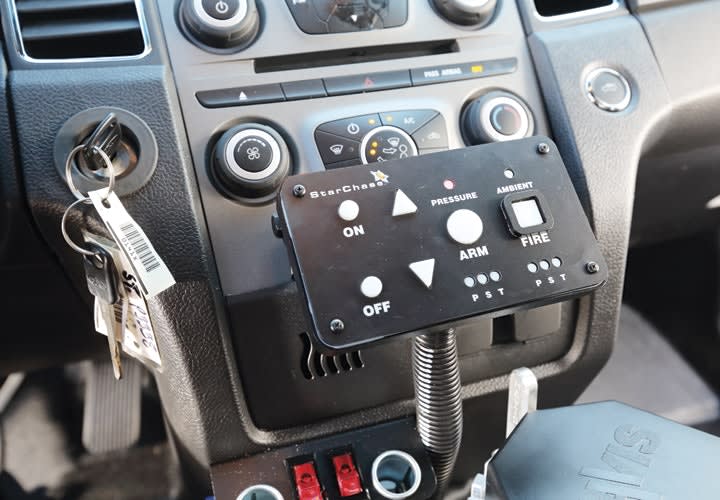The idea behind StarChase is to maintain surveillance of the suspect vehicle, then track it to a location where it can be stopped and the driver taken into custody. National Institute of Justice (NIJ) research shows that StarChase results in apprehension of the suspect in about 80% of cases. In contrast, research into traditional pursuit methods—including radio surveillance—shows that they are about 70% effective.
Not only is StarChase more effective, Fischbach argues that it is also safer than traditional methods. "StarChase slows things down for law enforcement so they get the bad guy and have more time to make better decisions," he says.
Fischbach also believes that StarChase can be an extremely effective tool for agencies that have restrictive vehicle pursuit policies. "It's (also) an alternative that allows an agency to have both a restrictive pursuit policy and capture the offenders," he says. "I hope that over time, StarChase will fit into every agency's use-of-force continuum."
StarChase is available to agencies through a variety of different programs. One of the most popular is called the "100 Club." The 100 Club supplies an agency with 10 systems, installation, and unlimited projectiles for one year for a price of $5,000 per unit.
New features on the StarChase system include a faster charging air compressor, increased reliability and ruggedization of the hardware, and a much faster refreshing GPS signal that now works with Google Street View. "The Google Street View interface is really kind of eerie," Fischbach says. "It's like the officer or dispatcher monitoring the pursuit is riding with the suspect."













